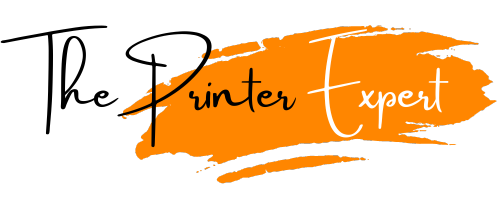5 Methods For Printing on Cardboard Boxes [2025]
No more using plain cardboard boxes strictly to deliver products! Cool packaging boxes have become one of the most effective branding tools in the current economy. An eye-catching box adds to the value of a product and grabs the customer’s attention at the points of sale.
Now, allow me to ask the obvious question; how do you put those logos, images, and text on those cardboard surfaces? If you want to get the answer to this query, you have come on the right track.
It’s always good to use cardboard boxes as a marketing tool. But first, make sure your box is of high quality and the packaging stands out among the boring plain boxes.
This blog dives into the various methods for printing on cardboard boxes, helping you choose the right technique for your needs.
Why Printing on Cardboard Boxes is Important?
Cardboard is a versatile material that’s sturdy yet lightweight, making it the best choice to use in the packaging industry. Here are some reasons why printing on cardboard might be the perfect solution for your next project:
- Improve Customer Experience: When customers receive packages, the brand name on the box keeps your company top-of-mind. A personalized printed box enhances the customer experience. The happier your customers are with their purchase, the more they would like to choose you over competitors in the future.
- Increase Brand Awareness: Your printing on cardboard boxes is the silent ambassador of your brand. Depending on the level of your business, your boxes may travel long distances. Having a logo or design on the outside lets you do mobile advertising while the box is being delivered to your customers. If you ship to businesses, they may place your boxes straight on store shelves, this package will expose numerous passing customers to your brand’s logo.
- Increase Safety: Your printed cardboard package isn’t limited to just printing logos and brand names. The additional information about your product mentioned on the box warns delivery professionals to deliver it carefully. A clearly labeled package is less likely to be mishandled by warehouse workers.
- Reduce Shipping Cost: Printed boxes also help to cut delivery expenses. When your packages are correctly labeled, they are less likely to get lost or damaged in transit. This may save you money on shipping insurance and claims.
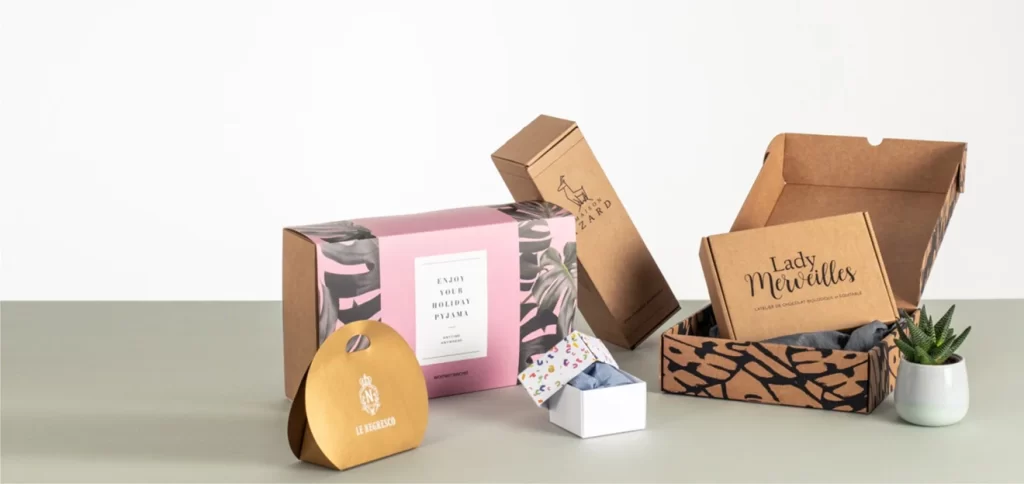
Techniques for Printing on Cardboard Boxes
Nowadays, there are two main approaches to consider when printing on cardboard boxes:
- Direct Printing: Direct printing is a popular method used for printing on cardboard boxes. This method involves printing the design directly onto the cardboard surface. Flexographic and digital printing are the most common methods used for direct printing.
- Pre-Printing: Here, the design is first printed on a separate paper stock and then adhered to the cardboard. Lithographic printing is a popular choice for pre-printing applications. This method is a top choice to achieve outstanding printing results on cardboard packaging boxes.
However, the next talk is all about which method you should use to print on cardboard boxes. So keep reading.
Key Printing Methods for Cardboard Boxes
To print on cardboard packaging boxes, the main types of printing techniques that are the talk of the town are the following:
- Flexographic Printing
The king of cardboard printing, flexo uses flexible printing plates to transfer designs onto the cardboard. These printing plates are made up of flexible rubber or photopolymer. The raised image area of plates is filled with ink with each specific color of the design that is mounted on a rotatory cylinder.
When attached to a rotatory cylinder, the substrate is passed between the inked plate and roller – the inked design is transferred onto the cardboard, one after one, and eventually completes the design.
It’s known for its speed, affordability, minimal setup, and ability to handle rough surfaces like cardboard. Flexo printing offers good-quality graphics for most designs, making it a versatile choice. It’s an ideal option for large-volume printing jobs.
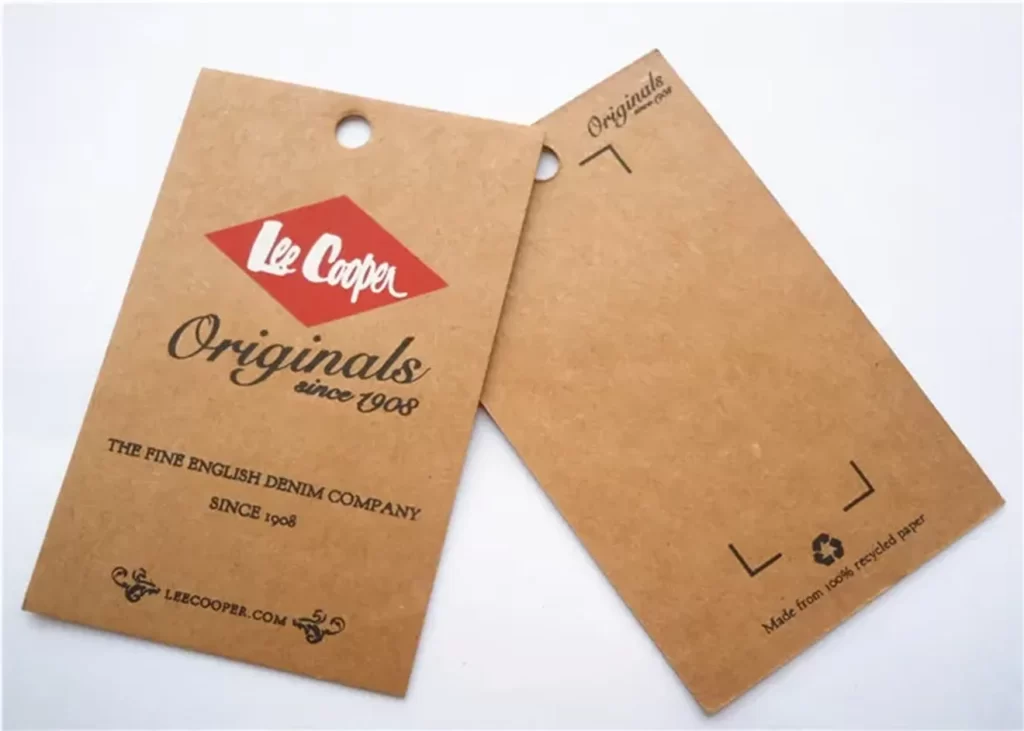
Applications
- Retail Packaging: Commonly used for printing logos, brand names, and basic designs on shipping boxes and retail packaging.
- Food Packaging: Food packages are a great example of printing on cardboard boxes. Products like cereal boxes and candy bars are printed using flexography.
- Repeated Patterns: Products like gift wrap and wallpaper are printed with a repetition of a single pattern. Flexographic printing prints out repeated patterns within no time.
- Digital Printing
This modern printing method uses a digital file to directly print onto the cardboard. It’s perfect for smaller orders, quick turnaround times, and variable data printing (think unique codes or personalized messages).
As the name suggests, it does not require expensive flexo plates, which makes it ideal for small-scale printing businesses. Simply send your design in PDF or other comparable file formats to a printer, and the picture will be printed on your cardboard.
Even though, you want tester packaging and then to scale up long-term packages, digital printing will give out quality prints with minimal setup. While digital printing offers excellent detail for text and simpler designs, it may not be the most cost-effective option for large, complex prints compared to flexography.
With digital printing, you have so much flexibility in your designs when you want to try out different printing styles, formats, and fonts without wasting time. It’s super easy to edit the design and personalize the packaging box according to your customer’s needs.
Best of all, digital printing for cardboard packaging boxes is an interesting era to see in the future. Take orders and deliver your products as fast as you can. For companies with tight deadlines, the advantages of digital printing are endless, making it the way to go.
Applications
- Short-run Packaging: Ideal for short-run packaging, personalized packaging, and prototype development (poster and signs).
- Newsletters: Upload your design once and print as many copies as you need. Newsletters don’t need large and stylish prints, that’s why this simple method works well.
- Lithographic Printing
The third method of printing on cardboard boxes is known as lithographic printing also refer as offset printing or litho-limination. It involves transferring an inked image from a plate to a rubber blanket, and then to the printing surface. Overall, the process is the same as flexographic printing but with a few limitations.
The design is first broken down onto aluminum plates—each for a different color from the design. While not commonly used for direct cardboard printing due to its limitations with rough surfaces, various types of offset printing excel in pre-printing applications.
With lithographic prints, images are transmitted to blanket rollers, which ink the design onto the cardboard. Unlike flexographic prints, your design is “offset” rather than printed directly on the cardboard. Lithography can also make a huge number of prints at once.
It allows for intricate designs and vibrant colors on a separate paper stock that can then be laminated onto the cardboard. This method is suitable for high-end packaging requiring exceptional visual quality.
Lithography may require high initial setup cost other than other printing methods. But once you are done with the equipment, you can print highly detailed and vivid images. To print photographs and realistic images, offset printing is the exact choice. However, the additional equipment cost makes it less cost-effective for tight-budget businesses.
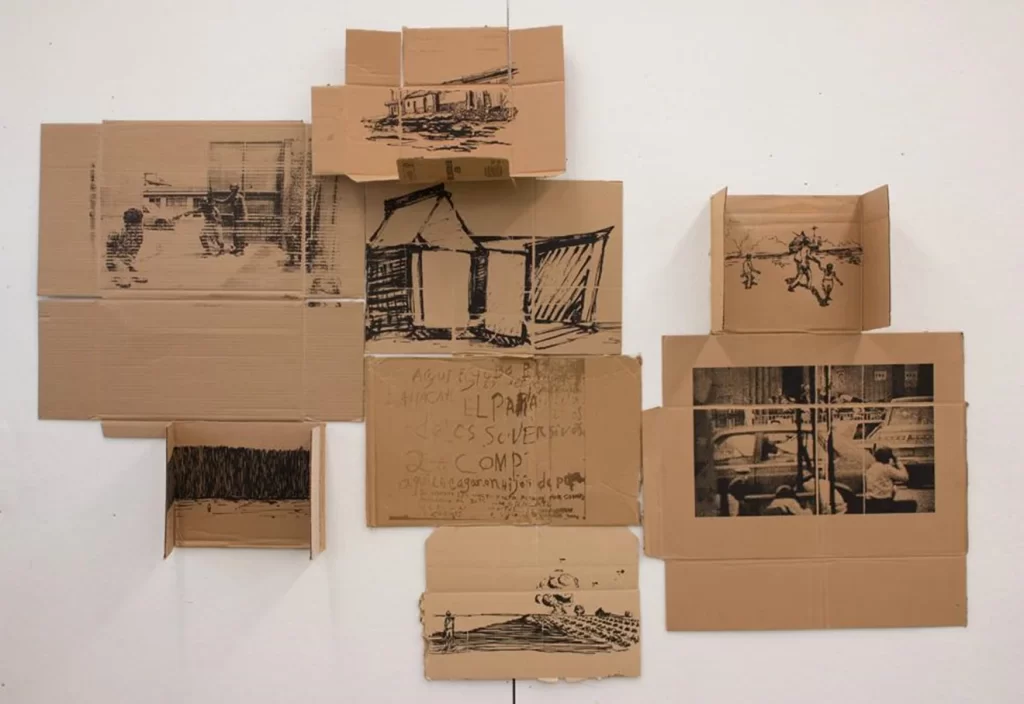
Applications
- Photo-realistic Designs: Perfect for printing detailed artwork, photos, and high-end product packaging (brochures and banners).
- Books and Magazines: Lithographic printing is the best way to print bulk quantities of books, magazines, and newspapers. Once the plates are done, print all with high-quality results.
- Screen Printing
Screen printing also known as silk screen printing is one of the oldest and most basic types of printing. However, it can still be used for printed cardboard packaging. It is a printing technique that uses a mesh to transfer ink to a substrate. Despite its simplicity, this method produces high-quality single or two-color photographs.
Screen printing makes use of stencils (as many stencils as your artwork has colors). This involves imposing a design onto a polyester screen or fine mesh. Blank sections are coated with an impermeable substance to prevent ink from passing through, while the image area is formed of a porous material that allows for complete ink coverage on the substrate.
During printing, a fill blade (or squeegee) is used to force ink through a screen set on a frame. When used for packaging, the board is usually screen printed before being converted into a box or display. One obvious advantage of this technology is that it can produce higher-resolution images than many other techniques.
This printing method is rarely used for corrugated packaging due to the setup time and manual nature of the process (unless extremely small quantities are necessary). Because of the color constraints, it is best suited for transit packing with limited logos.
Application
- Logos and Labels: Suitable for printing logos, labels, and promotional packaging.
- Protective Cases: Best to print on phone cases and laptop covers, etc.
- Rotogravure Printing
Rotogravure, also known as gravure, is another popular method of printing on cardboard package boxes. It is an intaglio printing process where the image is engraved onto a copper cylinder, and ink is applied to the recessed areas. The prints produced have smooth gradations and fine detail. The excellence and efficiency of printing prove it’s a go-to option for very large print runs.
Application
- Magazines and Labels: Commonly used for magazines, newspapers, labels, and greeting cards.
- Product packaging: It’s best applicable for product packaging with photographic images.
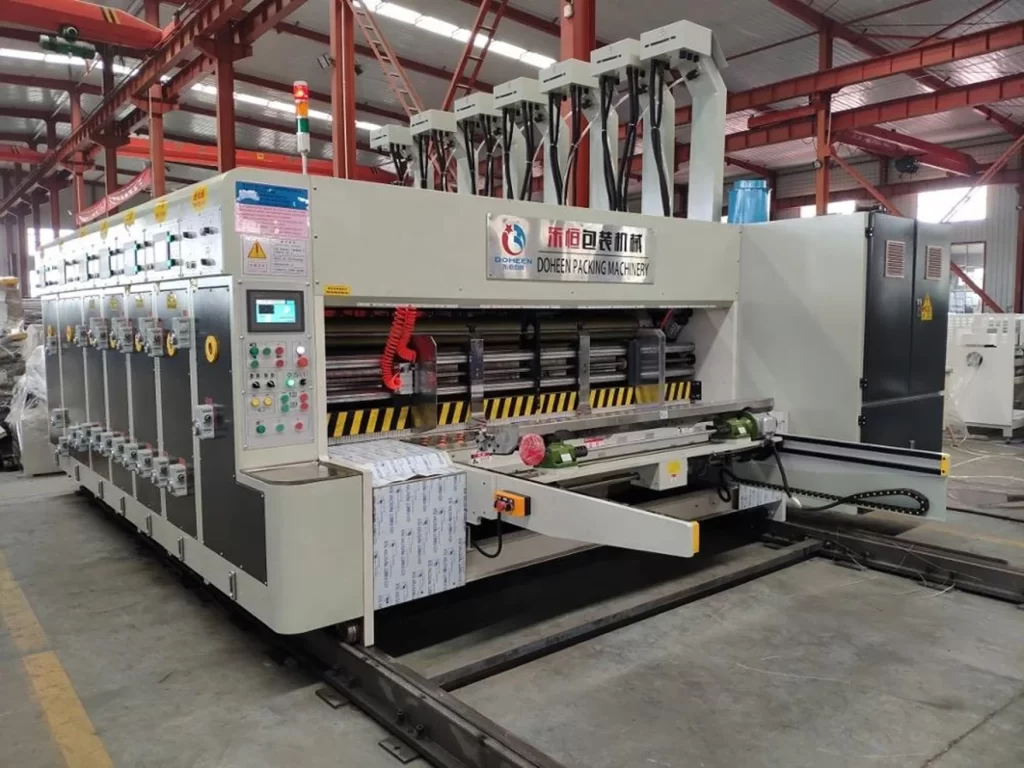
Inks Used in Cardboard Printing
Here are some of the common ink types used in cardboard printing:
- Water-based ink: This type of ink is formed from a combination of pigment and resin mixed with water. The addition of water makes these inks more environmentally friendly by diluting the pigment. Water-based inks work well on all varieties of cardboard, especially milk cartons.
- Solvent-based Inks: These inks combine pigment and resin to form a long-lasting tint. Companies frequently use solvent-based inks on glossy cardboard materials because they persist longer on the surface. Solvent-based inks are also commonly used for gravure and flexographic prints.
- Oil-based Inks: These inks are commonly used for barcodes and other important data on packages. It also works great on corrugated cardboard.
- UV Inks: These inks get their name from the fact that they dry when exposed to UV light. This ink produces more vibrant colors and has a high level of stickiness. People usually use it for vivid packaging and advertising goods.
Choosing the Right Printing Method
When selecting the best printing method for your cardboard boxes, consider the following factors:
- Order Quantity: Flexo and digital printing are more cost-effective for larger orders. Pre-printing might be suitable for smaller, premium packaging runs.
- Design Complexity: Simple designs with limited colors can be well-produced with flexo or digital printing. For intricate details and a wider color range, consider pre-printing with lithography.
- Turnaround Time: Digital printing offers the fastest turnaround times, while flexo and pre-printing might require more lead time.
- Budget: Flexo printing is generally the most budget-friendly option, followed by digital printing. Pre-printing with lithography is typically the most expensive.
Conclusion
Now that you’ve read about several methods for printing on cardboard boxes— it is high time to make proper decisions that will meet your business objective and plan. All these methods have their advantages and are suitable for different applications.
Choosing the right printing method lets you improve your packaging reach out to more clients and ultimately enhance brand awareness that will last impression on your customer.
